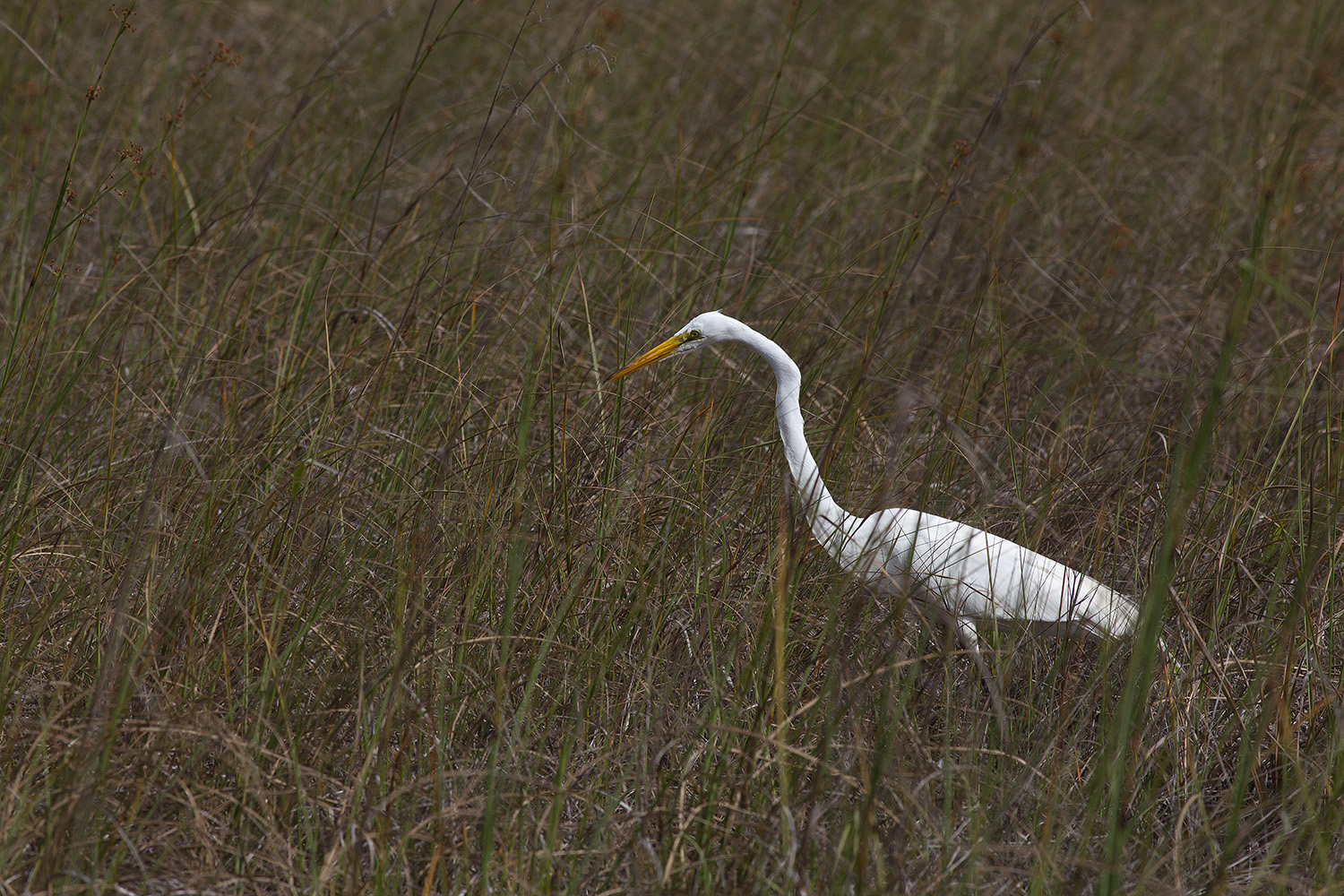
The great egret, one of several species of wading birds that were pursued for their plumes in the late nineteenth and early twentieth centuries. Frank Bond was a major influence in the protection of these birds and the establishment of the national wildlife refuge system. (Photo copyright 2016, Chris Madson, all rights reserved)
ON FEBRUARY 14, 1901, THE MEMBERS OF THE SIXTH WYOMING LEGISLATURE DID SOMETHING THAT SEEMED UTTERLY OUT OF character. These were men who had settled the frontier, cattlemen and miners, an unsentimental bunch of hard-nosed businessmen who spent most of the session deliberating over placer claims, wolf bounties, and licenses for the sale of liquor.
For someone looking back on the men and their times, it’s a bit of a shock to come across this passage in Governor DeForrest Richards’ message to that legislative body “I would respectfully recommend that some measure be passed guaranteeing protection to our song and insectivorous birds.” Ten days later, Senator Charles Guernsey introduced “an act to protect birds and their nests and eggs.”
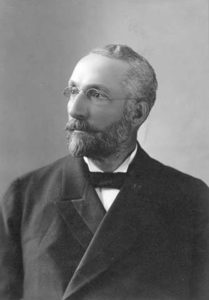
DeForrest Richards, governor of Wyoming, 1901 to 1905, and an advocate of Frank Bond’s model bird law. (Photo by W.G. Walker. Courtesy of Wyoming Archives and Historical Department)
“Any person,” Senator Guernsey wrote in his draft legislation, “who shall kill or catch any wild bird other than a game bird shall for each offence be subject to a fine of not more than five dollars for each such bird killed or imprisonment for not more than ten days, or both, at the discretion of the court. . . . Any person who shall take or needlessly destroy the nest or the eggs of any wild bird shall be subject for each offence to a fine . . . or imprisonment. . . .”
The record doesn’t tell us who voted for and against, but a majority of the legislators supported the proposal, and it took effect immediately on its passage. Wyoming’s sudden commitment to the protection of songbirds was surprising enough, but even more unexpected was the fact that Wyoming was the first state in the nation to approve such wide-ranging protection for nongame birds. Eight other states passed similar legislation in 1901, but Wyoming was the first to adopt the law and the first to put it into effect.
Conservation was not a foreign concept in the Wyoming of that time. Responsible citizens of the new state had recognized with growing concern the decline of big game, sage grouse, and trout and had taken the first steps toward reversing the losses of these valuable species, but this action on behalf of dickeybirds was something different. It was a commitment to a broader definition of wildlife’s value to the nation, and it was brought to Wyoming by a man with a talent for drawing and a passion for birds.
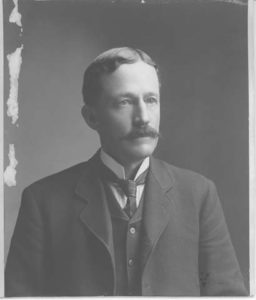
Fred Bond, Frank’s twin brother. Photos of Frank are hard to find. (Photo courtesy of Wyoming Archives and Historical Department)
Frank Bond climbed off the westbound train in Cheyenne sometime in late March 1882. He was twenty-five years old with a bachelor’s degree from the University of Iowa and an appointment as a draftsman with the Wyoming surveyor-general’s office.
He’d grown up on a prosperous farm near Iowa City where he developed an abiding love of the outdoors in general and birds in particular. With his twin brother, Fred, he collected and preserved more than 500 bird specimens during his college career, donating the collection to the university at the end of his undergraduate work. The opportunity to come west to the ragged edge of the frontier must have been irresistible.
When he wasn’t in the office, he was in the field, acquainting himself with new landscapes, collecting more bird specimens, and making careful notes on his natural history observations. By 1884, he’d completed his work for a master’s degree from the University of Iowa, and in 1887, he joined the American Ornithologists’ Union, a group of scientists and amateur birders that had formed in New York in 1883.
That year, he wrote his first ornithological paper, which appeared two years later in the AOU’s journal, The Auk. The subject was the Townsend’s solitaire, but his introductory remarks showed that his time in the field wasn’t spent solely in scientific pursuits.
“On December 7, 1887,” he wrote in the technical note, “I was invited by a conductor on the Cheyenne and Northern Railway, to go out to the end of the road and take a shot at mountain sheep. For the last three miles the road winds along in the magnificent North Platte Cañon and looks, from the brow of the perpendicular precipices on either side, like two silver threads glistening in the sun, and the construction train appears like the toy train of the nursery. I had with me only my long range Sharps rifle and was wholly unprepared to collect bird skins where were to be had here for the taking.”
He went on to report “countless thousands” of Townsend’s solitaires, robins, red-breasted nuthatches, and Steller’s jays feeding on juniper berries, “like school children out for a holiday.” The flocks chattered as they flew back and forth across the canyon— “It warms one’s heart,” he wrote, “to enter such a vale of melody in cold December.”
Bond’s obvious affection for songbirds was widely shared in the America of his time, but there were other views. Many immigrants from eastern and southern Europe embraced the traditions of the old country, which included the use of a wide variety of birds for the pot, with little concern for season or limit. They either shot the birds themselves or bought them from market gunners. In addition, a broad segment of the agricultural community was convinced that nongame birds ate grain before it could be harvested, and there was a widely held opinion that hawks and owls were a constant threat to poultry, which led many farmers to shoot raptors and songbirds on sight.
These motives must have accounted for the loss of a substantial number of nongame birds, but they paled into insignificance compared with the slaughter of birds for feathers used on women’s hats. Demand for the plumage of many species was intense, but the most prized were the breeding plumes of snowy and American egrets and a few other preferred species of wading birds.
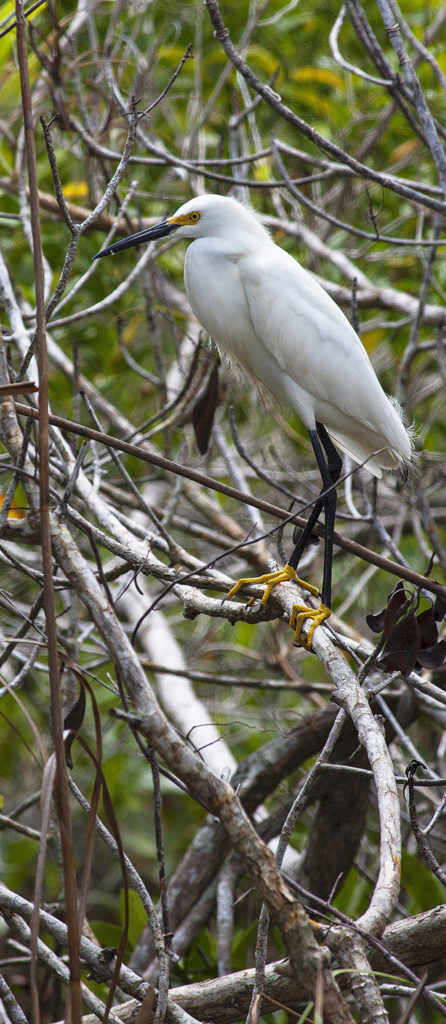
The snowy egret was pursued nearly to extinction to provide plumes of ladies’ hats in the late nineteenth and early twentieth centuries. Frank Bond was one of the major champions of a law to protect all nongame birds, including the snowy egret. (Photo copyright 2016 by Chris Madson, all rights reserved)
One observer of the feather trade at the turn of the nineteenth century wrote: “In 1903 the price of plumes offered to hunters was $32 per ounce, which makes the plumes worth twice their weight in gold.” (At the time, gold was selling for an average of $19 an ounce.) He reported that, in 1902, a single wholesale house in London sold 1,608 thirty-ounce packages of heron plumes. “These sales meant 192,960 herons killed at their nests, and from two to three times that number of young or eggs destroyed.”
In 1886, William Dutcher, a member of the AOU’s committee on bird protection, offered a similar report: “A New York taxidermist informed me that he had in his shop thirty thousand bird-skins, made up expressly for millinery purposes.” Demand had changed little in 1903 when he wrote that “nearly 80,000 Snow Buntings were found by a State game warden in a cold storage house in one of the larger eastern cities. The writer of this report has recently seen offered for sale by one of the leading department stores in New York such valuable birds as Flickers made up for millinery ornaments.”
One of the AOU’s primary reasons for being was to stop this uncontrolled carnage. In this first year of the organization’s existence, its members pressed the federal government to begin research on the ways birds benefitted agriculture. This pressure led to the formation of the Bureau of Economic Ornithology, forerunner of the U.S. Fish and Wildlife Service.
AOU member George Bird Grinnell used his position as editor of Forest and Stream magazine, which was the nation’s most influential outdoor periodical, to launch a new organization for the public. He called it the Audubon Society. The only requirement of membership was to sign a pledge to protect nongame birds. Within three years, the group had 50,000 members.
In its ongoing protection effort, the AOU drafted a model statute protecting nongame birds. The intent was to apprise state legislators of the problem and give them a way of solving it. Over the next fifteen years, AOU members visited states across the eastern part of the country in an effort to get the model law passed— with little success.
Bond was undoubtedly aware of all these measures. He remained active in the AOU and continued to contribute articles to The Auk as his knowledge of the region’s bird life expanded. At the same time, he was rising to a position of respect in the community. In 1890, he served a term in the state’s first legislature and by 1895, he had left the surveyor-general’s office and taken over as editor of the Wyoming Tribune, Cheyenne’s leading daily newspaper. If anyone was in a position to proselytize for adoption of AOU’s model bird law, Bond was the man.
Most of the issues of the Wyoming Tribune Bond edited have been lost to the deterioration of high-acid paper and poor storage, so there’s no way of knowing whether he used his position with the paper to push conservation the way George Bird Grinnell used Forest and Stream magazine on the national stage. It’s possible he editorialized on the issue, but considering the number of people in the state, he probably didn’t need to use print. In 1900, the city of Cheyenne had just over 14,000 residents, and the entire state’s population was under 100,000. Bond was in a unique position to sell the AOU’s model bird law to the handful of people who had settled in Wyoming, and following the examples of other prominent AOU members farther east, he certainly must have.
The governor’s support for a model law and the fact that Guernsey’s version passed so early in the session suggest that someone with connections had taken the time to acquaint the lawmakers with the plight of nongame birds and the growing public support for measures to protect them. Bond was almost certainly that someone.
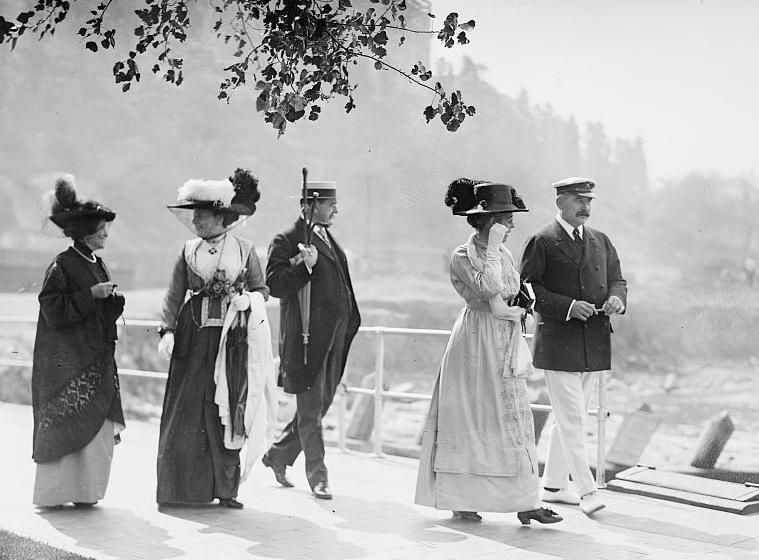
J.P. Morgan (right) strolling In New York City with three fashionable women, all displaying bird plumes on their hats. (Photo courtesy of the Library of Congress)
Two months after Wyoming passed its version of the law, Bond called an organizational meeting in Cheyenne to propose the establishment of an Audubon Society for the state. In a report later that year, an observer wrote that “quite a crowd of enthusiastic ladies and gentlemen assembled in the parlors of the Inter Ocean Hotel. It was found that public sentiment was overwhelmingly with the bird-protection movement, and that the new Audubon Society would soon embrace in its membership more than a thousand persons, in fact, two thousand members in Cheyenne, alone, did not appear an extravagant figure to those who met at the Inter Ocean hotel last evening.”
Frank Bond was elected president of the new group and immediately directed the treasurer to order another thousand pledge cards because the first thousand were “nearly exhausted.”
It’s an odd quirk of history that Bond launched the new group just as he was preparing to leave the state. The owner of the Wyoming Tribune, Joseph Carey, had just hired a new editor for the newspaper because Bond had accepted an appointment in Washington, D.C.
Irrigation wizard and Wyomingite Elwood Mead was in charge of “irrigation investigations” for the U.S. Department of Agriculture at the time. He knew Bond from their years in Cheyenne and was aware of Bond’s background as a cartographer with the Wyoming surveyor-general as well as his ability as a writer. Sometime in 1901, Bond made the move east, first to Mead’s irrigation investigations unit, and then to the federal General Land Office, forerunner of the modern Bureau of Land Management
The move to D.C. didn’t stop his conservation efforts, however. When Teddy Roosevelt set aside Pelican Island as a refuge for birds in 1903, Bond saw an opportunity to create a system of similar reserves on federal land elsewhere in the nation. He made a careful study of federal holdings and began to recommend especially productive habitats as “bird preserves.” According to T. Gilbert Pearson, who was then the chief executive of the National Association of Audubon Societies, Bond’s work effectively led to the creation of the national wildlife refuge system.
“It was he who prepared the Executive Orders and important explanatory letters of transmittal to the President for the remaining fifty-one
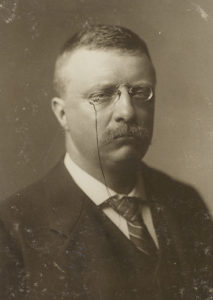
President Theodore Roosevelt, 1900. Roosevelt depended on Frank Bond’s encyclopedic knowledge of birdlife on federal lands, along with his mapping skills, to choose many of the earliest national wildlife refuges. (Photo by R.W. Thatcher, courtesy of the Library of Congress)
reservations,” Pearson wrote in 1911. “No man, at this early period in the bird-protection movement, can even estimate the value of these reservations to the rising generation, which is now taking up the burdens of human existence, much less foretell the blessings the increase in bird life will confer upon those who follow in centuries to come.”
Bond’s expertise in cartography was useful in the protection of national parks and monuments as well as refuges. He came to the 1912 conference on national parks held in Jackson Hole, where other attendees repeatedly sought his comments on pending reservations, challenges to titles, inholdings, and budgets. He had earned the respect of the greatest conservationists of the age, combining personal commitment with professional expertise to render exceptional service to the movement when it was desperately needed.
He remained with the General Land Office until his retirement in 1926, rising to the position of chief clerk, and he maintained his membership in the American Ornithologists’ Union until his death in 1940 at the age of eighty-four.
History is a quirky thing. Some people are woven into the commonly accepted narrative; others, often just as important in changing the flow of events, are forgotten. Frank Bond helped change the course of conservation in America. The fact that he’s been forgotten is no reflection on the magnitude of his contribution; it is due entirely to the vagaries of historical discourse and the faulty memories of those of us who came after him.
Gilbert Pearson remembered sitting with Bond on the veranda of the Endicott Hotel in New York one summer evening, entranced by the man’s ability to mimic the songs of American birds. It was the clearest possible evidence of Bond’s affection for “the vale of melody” that had claimed his attention over a lifetime. And it can be said that, as much as any other man of his time, Frank Bond saved those songs and the birds that sang them.
Leave a Reply
You must be logged in to post a comment.